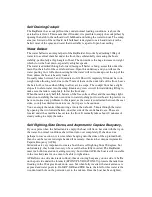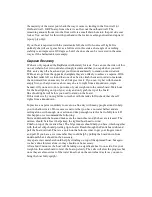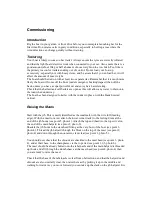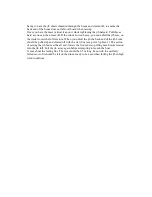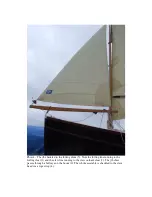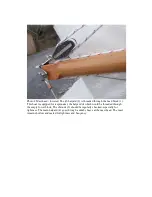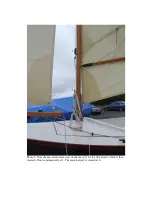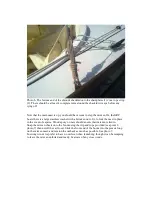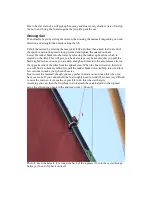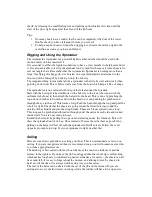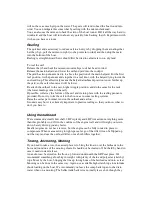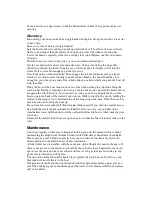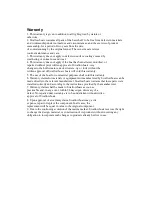
will not have as much grip on the water. The gusts will tend to head the boat round into
wind. You can mitigate this somewhat by sailing with the mizzen slackened.
You can also use the mizzen to back the stern of the boat round. Pull it all the way hard to
windward and the boat will turn about very quickly, like backing the jib. Experiment with
it when you have sea room.
Reefing
The quickest and easiest way to reduce sail in a hurry is by dropping the main altogether.
Let the jib go, pull the mizzen in tight (so she points into wind) and then drop the main
into the bottom of the boat.
Reefing is straightforward but it should first be tried in calm water or on dry land.
To reef the sail:
Release the jib and haul the mizzen into midships to sit her head to wind.
Release the main halyard and lower the sail and yard into the cockpit.
The yard has two pennants tied to it, above the position of the main halyard. For the first
reef position, tie the pennant ends together in a reef knot, with the halyard lying inside the
enclosed loop. This effectively means the halyard attachment position is now further up
the yard, so the sail when raised will be lower.
Re attach the outhaul to the new, higher cringle position, and do the same for the tack
(the lower leading corner of the sail).
If possible, roll away the bottom of the sail and tie into place with the reefing pennants
provided. Do not try to tie the sail to the boom, as in some reefing systems.
Raise the sail as per normal, tension the outhaul and sail on.
It sounds easy but it is extremely important to practice reefing so that you know what to
do if you have to.
Using the outboard
We recommend a small short shaft. 2HP is plenty and 4HP is maximum. Anything more
than this probably won’t fit in the confines of the engine well and will weigh your stern
down, barely driving you any faster.
Smaller engines do not have reverse, but the engine can be fully rotated in place to
compensate. When manoeuvring in tight spaces, let go of the tiller (it can be flipped up
out the way) and use the outboard tiller, or use both tillers together.
Towing, Anchoring, Mooring
If you need to take a tow, the easiest place is to bring the line in over the fairleads in the
bow and round one of the mooring cleats. It should not be cleated off, but held by hand in
case it needs instant release.
An anchor can be stored on the floor, up forward underneath the GRP seat piece. We
recommend something about 6kg in weight, with plenty of chain and polyester (stretchy)
rope. Moor by the bow, bringing the line up through one of the fairleads and onto a cleat.
Mooring can be done in the same way. Again use a suitable high stretch rope to minimise
shock loading on the boat. We recommend you leave the sump bailer open to shed rain
water when on a mooring. The ballast tank bailers we normally leave shut, though they

